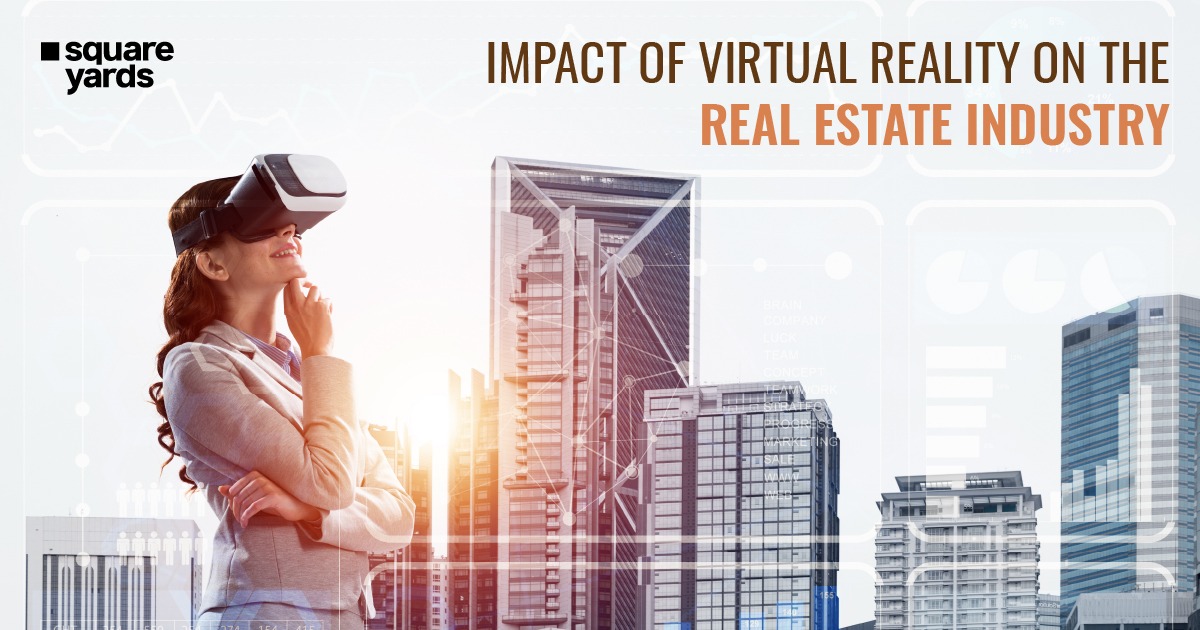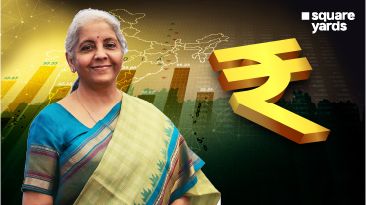In today’s fast-paced world, technological advancements continue to revolutionise various industries, and real estate is no exception. Over the years, buying or renting a property has traditionally involved physical visits, time-consuming open houses, and countless hours spent travelling between different locations. However, with the rapid advancement of virtual reality (VR) technology, the landscape of property viewing has been dramatically transformed.
Once confined to science fiction and gaming, virtual reality has become a powerful tool that revolutionised the real estate market. It has opened up a whole new dimension of property exploration, providing a level of immersion and interactivity that was previously unimaginable. Potential buyers and tenants can now embark on virtual journeys through VR headsets, exploring properties from the comfort of their homes.
So, how can you use virtual reality in the real estate market?
The applications are numerous, and the benefits are substantial. From virtual property showcases and guided visits to interactive tours and virtual staging, VR technology has reshaped how properties are presented and experienced.
Gone are the days of relying solely on photographs and videos to get a glimpse of a property’s interior. With virtual reality, potential buyers can now enter a virtual world where they can navigate through the rooms, walk along the hallways, and even gaze out of the windows to admire the views. The level of realism and detail that VR offers is remarkable, allowing users to get a genuine feel for the property as if they were physically present.
This blog explores the extensive use of virtual reality in property viewing and its benefits.
Table of contents
How Can You Use Virtual Reality in the Real Estate Market?
Virtual reality has transformed the way people experience property viewing, offering numerous applications that benefit buyers and sellers. One of the most significant advantages of VR in property viewing is its convenience. The days of juggling conflicting schedules, battling traffic, and enduring endless property visits are long gone. Potential buyers can explore multiple properties without leaving their homes with a VR headset and a stable internet connection. This time-saving aspect is particularly beneficial for international buyers or those with busy lifestyles, as it eliminates the need for extensive travel and allows for efficient property searches.
Virtual reality also enhances the engagement and emotional connection between buyers and properties. With the ability to interact with the virtual environment, potential buyers can truly immerse themselves in the space. They can rearrange furniture, experiment with different design options, and envision how they would personalise the property to suit their own tastes and preferences.
Let’s explore some of the pivotal ways VR is used in the real estate market:
Virtual Property Showcases
Virtual property showcases allow potential buyers to explore properties remotely. Using VR headsets, they can virtually walk through houses, apartments, or even entire developments. This technology saves time and eliminates the need for physical visits, especially for long-distance buyers, foreign investors, or those with limited availability.
Guided Visits
With VR, real estate agents can conduct guided tours providing a personalised and interactive experience. Buyers can interact with agents in real time, asking questions and receiving immediate responses. This feature enhances engagement and helps potential buyers make informed decisions.
Interactive Visits
VR technology enables interactive property visits, allowing users to customise their experience. They can rearrange furniture, change colours, and explore design options in real time. This interactive element helps buyers envision the potential of a property, making it easier for them to connect emotionally and see themselves living there.
Virtual Staging
Virtual staging is a cost-effective alternative to traditional staging, where furniture and decor are added digitally to vacant properties. This technique helps potential buyers visualise the property’s potential, giving them a better understanding of its size, layout, and possibilities.
Architectural Visualization
For property developers and architects, VR can showcase unbuilt projects through virtual walkthroughs. Buyers can explore floor plans, experience the design concept, and get a realistic sense of space and proportions. This technology aids in pre-selling properties and helps potential buyers understand the project’s vision before construction begins.
Virtual Instructions for Tenants
VR technology can also assist property managers by providing virtual instructions for tenants. Instead of relying on written manuals, tenants can follow virtual tutorials on how to use appliances, operate security systems, and carry out maintenance tasks. This interactive approach simplifies the onboarding process and reduces the need for physical assistance.
Virtual Commerce
In addition to property viewing, virtual reality opens up opportunities for virtual commerce in the real estate industry. Buyers can purchase directly within the VR environment, such as furniture or home decor showcased during the virtual tour. This seamless integration of commerce adds convenience and enhances the overall user experience.
The Benefits of VR Technology
Virtual reality has several benefits, making it a game-changer in the real estate market. The following are the benefits of VR technology for property viewing and 3D-enabled property tours.
Enhanced Property Visualization
VR provides a more immersive and realistic experience than traditional photographs and videos. Buyers can navigate spaces freely, giving them a better sense of the property’s layout, size, and flow. This enhanced visualisation helps buyers make more confident decisions and reduces the chances of surprises upon physical inspection.
Time and Cost Savings
Virtual reality eliminates the need for multiple physical visits to properties. Buyers can explore numerous properties in a short amount of time without the constraints of travel or scheduling conflicts. This time-saving aspect benefits buyers and sellers, making the property search process more efficient and cost-effective.
Increased Engagement and Emotional Connection
By allowing buyers to interact with properties, virtual reality helps create an emotional connection. Buyers can visualise themselves living in the space, imagining how it would fit their lifestyle and personal preferences. This emotional connection is crucial in the decision-making process, as it helps buyers form a deeper attachment to the property.
Accessibility and Convenience
Virtual reality breaks down geographical barriers and offers accessibility to properties regardless of the buyer’s location. Potential buyers can explore properties from the comfort of their own homes, saving them time and effort. This convenience is especially beneficial for international buyers or those with limited mobility.
Risk Reduction
Virtual reality mitigates the risk of investing in a property without thoroughly understanding its condition and layout. By virtually touring a property, buyers can identify any potential issues or discrepancies early on, allowing them to make more informed decisions. This risk reduction minimises the chances of costly surprises and helps buyers feel more confident in their investments.
Global Reach
Virtual reality transcends geographical boundaries, showcasing properties to a global audience. Sellers can attract potential buyers from anywhere worldwide, increasing their reach and exposure. This global accessibility opens up new markets and opportunities for both buyers and sellers.
Time Efficiency for Agents
Real estate agents can save time by utilising virtual reality technology. Instead of spending hours organising and conducting physical property visits, agents can focus on more productive tasks. Virtual reality lets agents showcase multiple properties simultaneously, streamlining the sales process and increasing efficiency.
Customisable Design Options
Virtual reality offers buyers the flexibility to explore different design options and modifications. They can visualise colour changes, materials, and layouts, helping them decide on renovations or customisation. This customisation feature gives buyers control and personalisation, enhancing their overall satisfaction.
Environmental Sustainability
By reducing the need for physical property visits, virtual reality contributes to environmental sustainability. It reduces carbon emissions associated with travel, minimising the ecological impact of the real estate industry. Virtual property tours align with the growing focus on eco-friendly practices and can be considered a greener approach to a property viewing.
Inclusive Access for People with Disabilities
Virtual reality provides an inclusive experience for individuals with disabilities. People with mobility challenges or limited physical access can still explore properties virtually. This inclusivity ensures that everyone has an equal opportunity to engage in property viewing, promoting accessibility and diversity in the real estate market.
Don’t miss It!
| Metaverse Land | How to Buy Land in Metaverse? |
| Future of Metaverse | Virtual Reality of Metaverse |
| Virtual Land | How to Buy Virtual Land in Metaverse? |
| Metaverse Land Price | Complete Info about Metaverse Land Price |
Is There a Downside of Virtual Reality in 3D Enabled Property Tours?
While virtual reality in property viewing and 3D-enabled property tours offer numerous benefits, it’s important to consider some potential downsides:
Limited Physical Sensations
VR technology primarily focuses on visual and auditory experiences, meaning that the physical sensations of a property, such as texture, temperature, or smell, cannot be fully replicated. Buyers may miss out on these sensory aspects that can significantly impact their perception of a space.
Cost and Accessibility
VR equipment, such as headsets, can be expensive, potentially limiting access for some buyers or tenants. Additionally, not everyone may be technologically inclined or comfortable using VR devices, which could create barriers to adoption and restrict its widespread use.
Potential Technical Glitches
As with any technology, VR experiences are not immune to technical glitches or malfunctions. Connectivity issues, hardware limitations, or software errors can disrupt the immersive experience, leading to frustration or disappointment for users.
Loss of Personal Touch
Virtual property tours, while convenient, lack the personal touch of interacting with a real estate agent or meeting the property owner face-to-face. The absence of human interaction may hinder establishing a personal connection and make it more challenging to ask specific questions or negotiate terms.
Difficulty Assessing Property Condition
While VR can provide an excellent visual representation of a property, it may not accurately capture all the details necessary to assess its condition. Buyers may miss subtle flaws or issues that would have been noticeable during a physical visit, potentially leading to surprises or disappointments later on.
Wrapping Up
Virtual reality has revolutionised how properties are viewed and experienced in the real estate market. It offers various applications, including virtual property showcases, guided visits, interactive tours, virtual staging, architectural visualisation, virtual tenant instructions, and even virtual commerce. The benefits of VR technology, such as enhanced property visualisation, time and cost savings, increased engagement, accessibility, and risk reduction, have made it a game-changer in the industry. As virtual reality continues to evolve and improve, it is poised to become an indispensable tool for property buyers, sellers, agents, and developers. Its ability to create immersive and realistic experiences, coupled with its convenience and accessibility, makes it an invaluable asset in the property market. Virtual reality is not just a trend but a transformative technology reshaping how we interact with and explore real estate.
FAQ’s about Virtual Reality
Q1. Can virtual reality completely replace physical property visits?
While virtual reality offers a highly immersive and convenient experience, physical property visits still hold value. VR can be a complementary tool, allowing buyers to narrow their choices and preselect properties before committing to in-person visits.
Q2. Do I need special equipment to experience virtual reality property tours?
Virtual reality property tours can be experienced using VR headsets like Oculus Rift, HTC Vive or even mobile-based headsets like Google Cardboard. However, many virtual tours can be accessed and explored using a computer or smartphone without a VR headset.
Q3. Is virtual staging as effective as physical staging?
Virtual staging provides a cost-effective alternative to physical staging and offers similar benefits. While physical staging allows buyers to experience the property in person, virtual staging helps buyers visualise the potential of a vacant space, making it an effective tool for selling.
Q4. Can virtual reality be used for commercial properties as well?
Absolutely! Virtual reality is not limited to residential properties. It can be utilised for commercial properties, including office, retail, and industrial. Virtual reality offers the ability to showcase commercial properties’ layout, design, and features, attracting potential tenants or buyers.
Q5. How secure is virtual commerce within virtual reality property tours?
Virtual commerce within virtual reality property tours can be secure if proper measures exist. Buyers need to use trusted platforms and make purchases from reputable sources. Encryption and secure payment gateways should be implemented to protect buyers’ sensitive information.
Q6. Are there any privacy concerns when using virtual reality for property viewing?
While virtual reality can provide an immersive and realistic experience, privacy concerns may arise. It’s important to ensure that any personal information shared during the virtual tour or within the VR platform is protected and secure. Buyers should also be cautious about sharing sensitive information or financial details within virtual reality environments and stick to trusted platforms and reputable sources.
Q7. Can virtual reality accurately represent the size and dimensions of a property?
Virtual reality technology strives to represent a property’s size and dimensions accurately. However, it’s important to note that the perception of space in virtual reality can vary depending on the individual and the quality of the VR experience. For precise information, buyers should refer to the property’s floor plans and measurements and consult real estate professionals for clarification.
Q8. Will virtual reality replace traditional property visits entirely in the future?
While virtual reality has transformed the property viewing experience, it is unlikely to replace traditional property visits in the foreseeable future completely. Physical visits offer the opportunity to physically experience the property, assess its condition, and evaluate the neighbourhood and surrounding environment. Virtual reality is a powerful tool for streamlining the property search process and providing initial impressions. Still, physical visits remain essential for making final decisions and ensuring a comprehensive evaluation of a property.


























